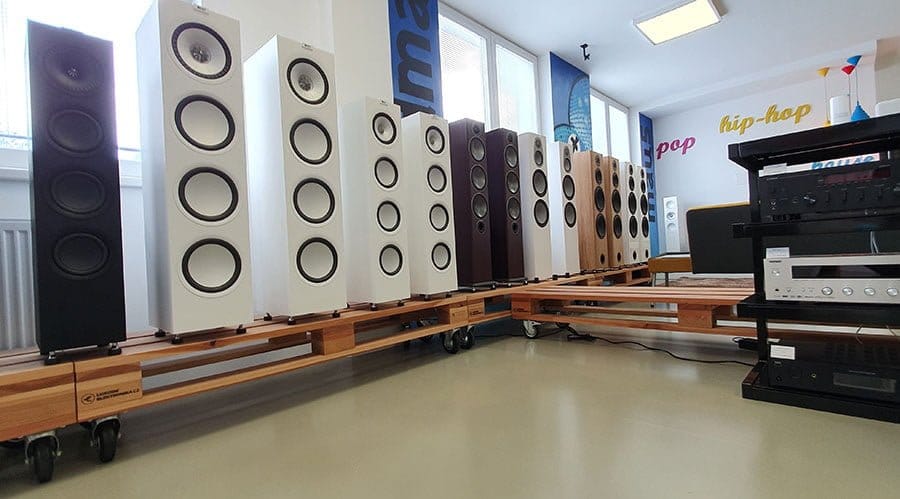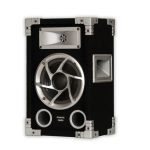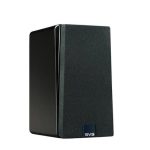Whether you’re an audiophile or just a regular music listener, you obviously love to hear the highest possible audio quality from your music system. Getting the best sound quality means that you have to connect your sound system to high-quality speakers. Even if you have the best music player or AV receiver, you won’t enjoy great sound without a good-sounding speaker. Regardless of how powerful your music player or receiver is, what determines the kind of sound you’ll ultimately hear is the kind of speakers you have.
Some people assume that the most expensive speaker will sound the best. However, you’ll be surprised to find that a less expensive speaker sounds much better than a more expensive one. Similarly, the largest speaker doesn’t necessarily mean that it sounds the best. You might even find a smaller speaker sounding better than a larger one and just wonder the reasons behind the difference.
So what makes a good sounding speaker? Determining the best sounding speaker isn’t just a matter of cost or size. There’s more that matters for one speaker to sound better than another one. There’re many factors that contribute to the kind of sound delivered by a speaker. If you’re planning to upgrade your old speaker system, invest in a new speaker system, or even assemble your own sound system but you don’t know how to choose the best-sounding speaker, then this article is meant for you. We’ve prepared a guide on the features that make a good-sounding speaker assist you in knowing what to look out for when shopping for the best-sounding speaker.
Materials Used
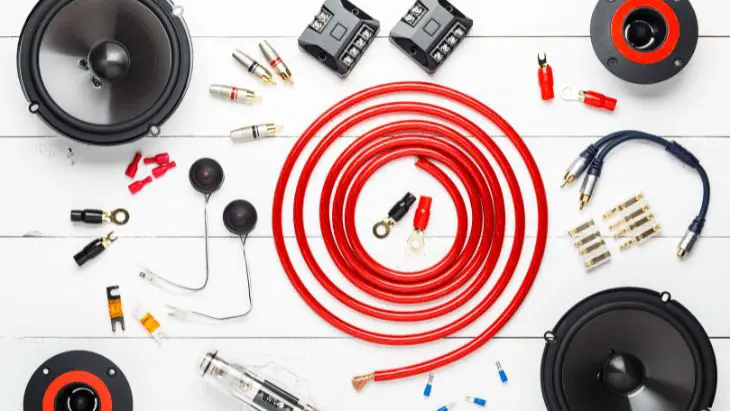
A speaker comprises multiple components. Each component is made of a certain material. Manufacturers often use different materials to make different speaker components. Basically, the key components of a speaker are the cone driver, suspension, coil, and magnet. The cone driver, also known as the speaker diagram, is the component of a speaker that moves in vibrating motions to produce sound. The type of material used to make the cone determines the overall quality of sound you’ll get. Basically, cones are made of metal, polypropylene, paper, carbon fiber, or cloth. Each of these materials has its own merits and demerits. Regardless of the cone material, you’ll choose, what matters is the quality of the material. For instance, if you choose a speaker with a paper cone, ensure the paper cone is of the highest quality. Also, if you choose cloth, carbon fiber, metal, or polypropylene cone, ensure the material is of the highest quality.
The voice coil also matters in sound quality. Basically, the voice coil moves the driver cone upon reacting to the magnetic field produced by an electric current. If you need a tighter bass response, then you should go for a speaker with a larger voice coil. Voice coils are usually made of different materials including copper, kept on, vulcanized red fiber, and aluminum among others. Aluminum and copper are the most commonly used materials for making voice coils. Ensure the voice coil material is of high quality to enjoy the best sound.
Frequency Response
The frequency response of a speaker determines the kind of sound range you’ll hear. Basically, frequency response is the frequency range reproduced by a speaker. It should be noted that frequency response does not affect sound quality, but it determines the range of sound you’ll hear. As such, it’s important when choosing a speaker with respect to the kind of frequency you want to hear.
Basically, the human ear recognizes a frequency range of 20 Hz to 20 kHz. The main frequencies produced by speakers are high, mid-range, and low. If you want to hear more highs, then you should go for a speaker that is specially designed for high frequency. High frequencies are mostly meant to reproduce sounds from instruments. If you’re interested in vocals, then you should go for a speaker with a mid-range frequency. In case you want more bass, then you need a low-frequency speaker.
For a speaker to sound good, it should be able to reproduce the frequencies it supports efficiently. If the frequencies reproduced vary in volume, then it means that the speaker is destroying the original sound from the music player. Thus, a good-sounding speaker is one that can reproduce even complex sounds in a balanced manner.
Power Handling and Sensitivity
Everyone desires to have the best sounding speaker. To get such a speaker, you’ll need to consider its power handling and sensitivity. Power handling of a speaker is usually measured in watts. All speakers come with a maximum power handling capacity. If you feed the speakers with power that exceeds their capacity, then you might damage them. Basically, the power handling of a speaker is usually grouped into two categories, which are nominal power and peak power. Nominal power is the power that a given speaker may safely handle for a prolonged period of time without getting damaged. On the other hand, peak power is the power that a given speaker may handle within short bursts without getting damaged. A speaker that sounds good should be the one that can deliver high-quality sound under little power and one that can handle a lot of power without getting damaged or distorting the sound. Thus, if you need a louder and more booming speaker, then you should go for one that can handle more power from an amplifier.
Speaker sensitivity also matters when it comes to sound quality and power handling. The sensitivity of a speaker is its ability to transform incoming electrical power into sound energy. Speaker sensitivity is usually measured in decibels. A speaker that sounds good is the one that is more efficient in converting electric power into sound energy, and this means that it should have a higher speaker sensitivity rating. A speaker with a lower sensitivity rating means it’s less efficient and will not sound very good. Basically, the ideal speaker sensitivity is an average of between 85 and 91 decibels. A speaker with a power sensitivity of below 85 decibels will not sound that good.
A good speaker is one that offers clear and clean sound even at high volume. As long as you’re feeding it with the power that is within its limits, a high-quality speaker will not distort the sound. A low-quality speaker will distort sound even when the power being fed into it from an amplifier is within its power rating.
Crossover Circuit
The crossover is the brain behind a speaker. It directs the frequency that a driver should reproduce. It also matches the frequency and stabilizes the load that an amplifier feeds the speaker. If a speaker lacks a high-quality crossover, its driver may get overdrove leading to distortion and even damage. For instance, if a speaker comprises a tweeter driver, a mid-range driver, and a bass driver, then it needs a high-performance crossover to ensure each driver receives its optimized frequency range. The crossover will ensure the tweeter will get its optimized high-frequency range and similarly ensure the mid-range driver gets its optimized mid-range frequency. The bass driver will also get its optimized low frequency. A speaker system that lacks a well-designed crossover or one that doesn’t have one will lead to frequency overlap, leading to distortion and poor sound quality.
Some manufacturers may attempt to cut costs by building low-quality crossovers. Basically, a good crossover should have a well-designed high pass filter and low pass filter. The high pass filters usually limit frequencies that are below what the driver can efficiently reproduce whereas the low pass filter limits frequencies that are above what the driver can efficiently reproduce. For instance, it ensures a tweeter won’t attempt to reproduce low-range frequencies and ensures a woofer won’t attempt to reproduce high-range frequencies.
Speaker Cabinet Design and Material
All the components of a speaker are mounted in a cabinet. The kind of cabinet design and the material making the cabinet contributes significantly to the kind of sound you’ll get from the speaker. To start with, a speaker cabinet can be either ported or closed in design. The choice to make will depend on the kind of sound you want. For instance, sealed cabinets sound best in sound accuracy. On the other hand, ported cabinets are best in bass response. Thus, if you’re interested in sound accuracy more than bass, then a sealed cabinet will sound better for you. On a similar note, if you’re more interested in bass response, then a ported cabinet will be your best bet. Also, the enclosure shape and layout matter. Regardless of the shape, the cabinet should be tight enough to handle the power of the driver but not extremely tight in a way that would make the sound waves fail to pass through. The drivers should be placed within the cabinet in a way that allows for unobstructed and clear sound.
The cabinet material also matters. Speakers are made of different materials including plastic, wood, and fiberboard. Plastic cabinets are only ideal for small speakers where high-end sound quality is not a priority. Wood and fiberboard are the best materials for making speaker cabinets. Wood is the most commonly used material for making cabinets. The quality of the wood will determine how the speaker will sound. Basically, thicker wood will sound better than a thinner one. If the cabinet material is extremely solid, then it’ll reflect sound and the speaker won’t sound great. Thus, a good-sounding speaker cabinet is one that has sound dampening material. The material is usually lined in the interior cabinet walls to reduce sound reflection. The kind of sound dampening material should be of the best quality. Also, a thicker dampening material is better than a thinner one.
Also, speaker cabinets have some resonance frequency. Resonance frequency refers to the frequency of natural vibrations as a result of the physical characteristics of the vibrating material. Basically, as the cone produces sound, the sound waves will hit the cabinet, making it vibrate. If the resonance frequency of the cabinet material is high, then you’ll get low-quality sound. Thus, the best cabinet material is the one with the lowest resonance frequency. Generally, the best thing to do is to choose the most rigid cabinet material. A highly rigid material produces a lower resonance frequency than what the human ear can hear, thereby enhancing the sound quality of the speaker.
Speaker Cables
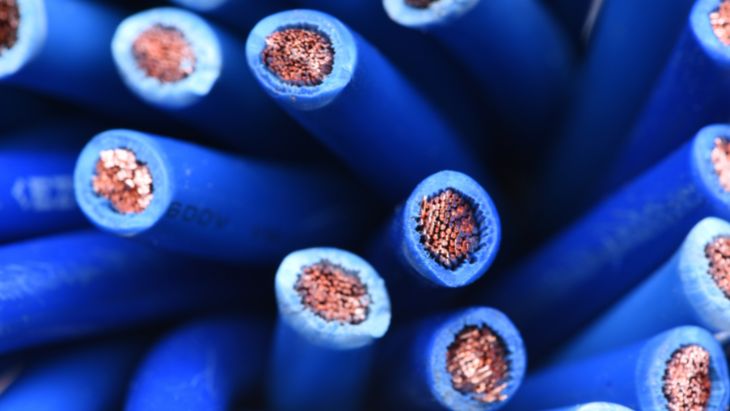
Besides the internal components of a speaker, there’re other factors that affect the quality of sound produced by a speaker. For instance, speaker cables play a major role in the kind of sound that a speaker reproduces. The capacitance and resistance of a speaker cable matter most. Its material, length, and gauge also contribute to the sound quality of a speaker. Speaker cables with higher capacitance mean they can hold more charge such that there will be less loss, thus higher quality sound. A speaker cable with lower resistance means that more electric power will reach the speaker, thus better sound quality.
When choosing a speaker cable, go for a cable with a lower gauge rating. The thicker the cable, the lower the gauge rating. A lower gauge rating means lower resistance and thus less power loss. Also, ensure the length is minimal since longer cables have more resistance. Also, the material making the cable will determine its resistance. Copper and silver are ideal for speaker cables, but silver is more expensive than copper, making copper more favorable. However, silver has lower resistance than copper.
Listening Environment
If you want your speaker to sound even better, you’ll need to consider the listening environment. For instance, a room acts as an additional speaker cabinet. You’ll need to place the speaker in the best position in a room and ensure the room has favorable acoustics to get the best sound. Basically, room features such as wooden floors, glass windows, hard surfaces, and even bare walls create reflections. The reflections lead to lower sound quality and echoes. You can improve room acoustics by adding drapes, carpets, and rugs to absorb any reflections to improve the listening environment.
Besides these factors, adjust sound settings from your music player or amplifier according to your preferences and to the level, at which the speaker sounds best. Use your ears when tuning until the speaker sounds best. With that said, remember that paying more won’t guarantee better performance. Thus, what makes a good-sounding speaker is the materials and components making the speaker. Also, decide your sound needs before buying a speaker. Ultimately, speakers that sound best to you should be your choice even if they may not sound as good for someone else.
Michael Evanchuk is a San Francisco-based sound engineer with 20 years’ experience installing, troubleshooting, and repairing commercial, automotive, and household sound equipment. Evanchuk owns an auto stereo center, where he offers highly competitive car audio installation and repair services. He has written dozens of articles on different sound engineering topics, all of which have been published in leading journals, blogs, and websites.

